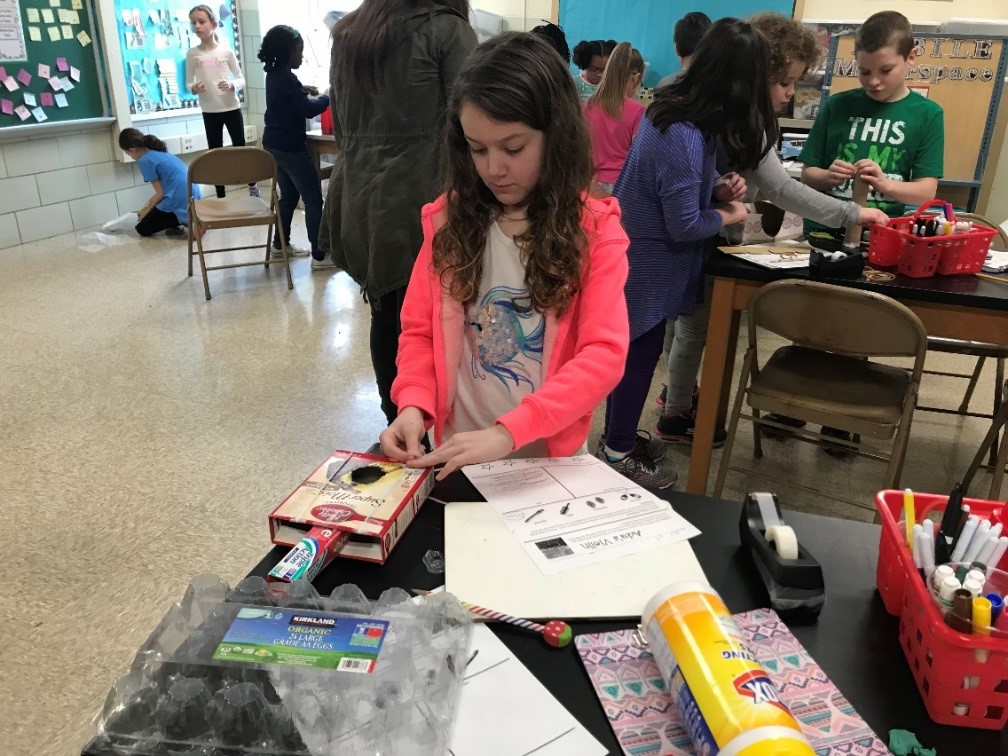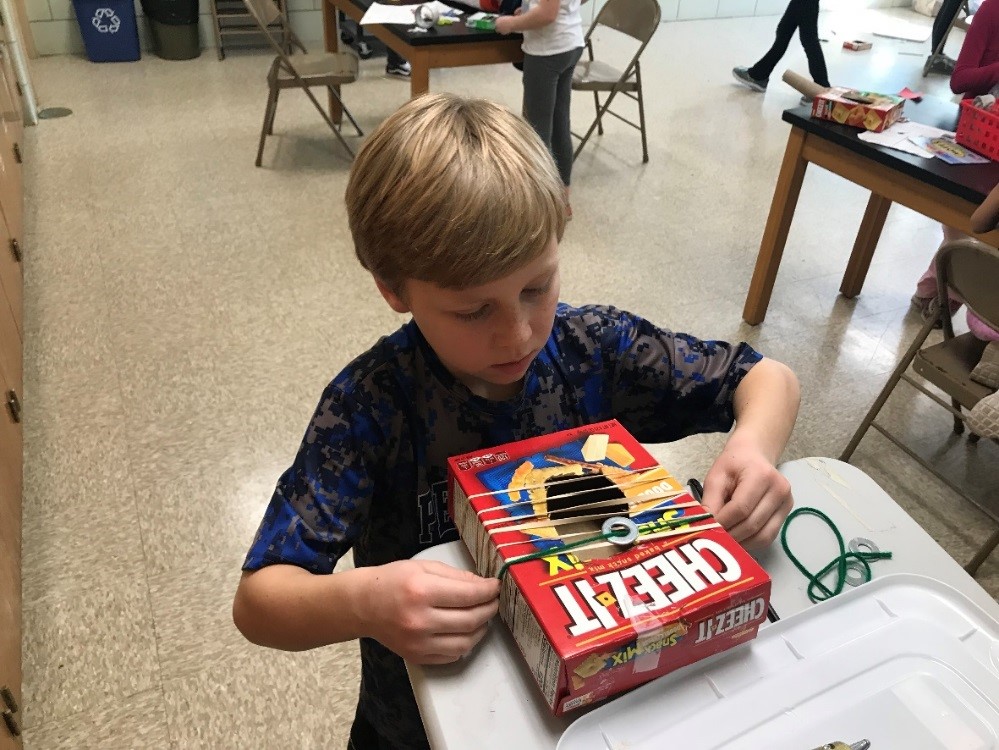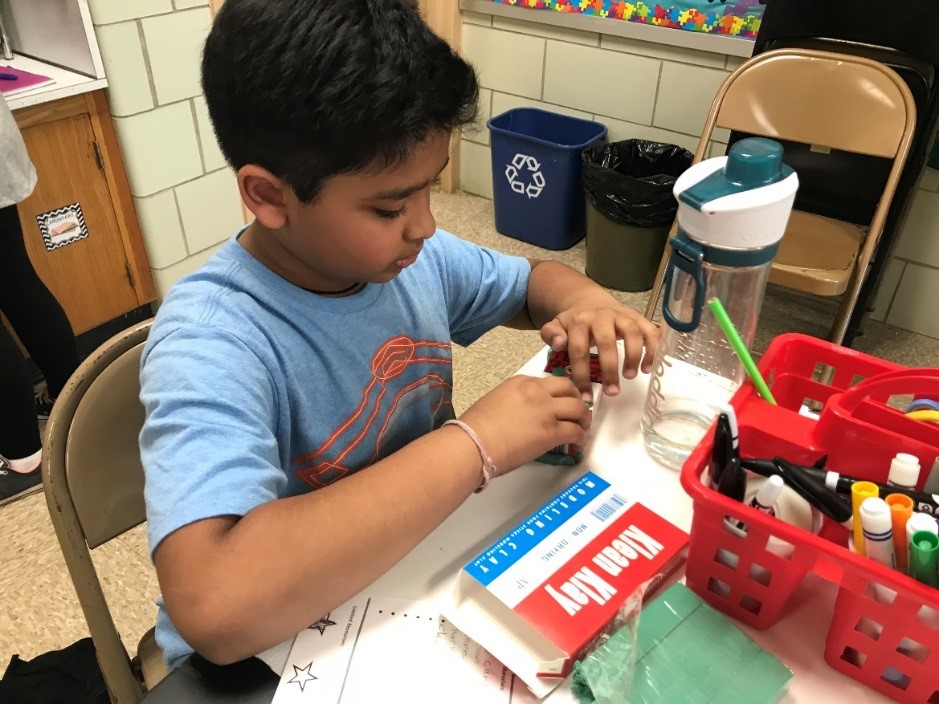“Pursue Your Dreams”: Reading and Experiencing Ada’s Violin
Michelle Hassay Doyle
The past two years have been a change for me because I moved from teaching first grade to teaching in a departmentalized third grade with 69 students. My responsibility on our third-grade team was to teach social studies, science and health. I looked for rich learning opportunities to use global literature to help students make strong, authentic, and meaningful reading and writing connections. In addition to learning content, my goal was for students to apply and strengthen their knowledge and skills to become more proficient readers and writers. I also wanted students to develop an appreciation of and respect for people in our global society.
The third-grade social studies curriculum I am required to follow focuses on three continents: Asia, South America, and Europe. For each continent the curriculum explores a few countries in detail. For each of these countries we study the type of government, human-made and natural features, the culture, geography, and climate of the area, the types of industries and jobs, school systems and folktales.
The curriculum does not include a textbook, children’s literature or global literature. So, to prepare and organize each social studies unit, I search our school and local libraries for related global children’s books to add to the curriculum. My goal is to have students read and immerse themselves deeply in the culture of each country and provide opportunities to explore topics that are of interest to them. Through their personal explorations and our collaborative discussions, I believe students develop richer intercultural understandings that go beyond surface content about food, festivals, fashion, folktales, and famous people (Short, 2009).
We take about six weeks to study each continent. Towards the end of each study, students compare and contrast the particular countries within the continent and eventually compare and contrast the continents, including our continent of North America.
Reading and Experiencing Ada’s Violin
This past year, 69 students in three classrooms comprised the third grade. About 30% were African American, 35% European American, 19% Hispanic, and 11% Asian, Indian, or another heritage. Of these, 10% were English Language Learners and about 50% received free and reduced meals from the school.
As part of our study of South America I introduced students to Ada’s Violin: The Story of the Recycled Orchestra of Paraguay by Susan Hood and Sally Wern Comport (2016). Paraguay was not one of the focal countries in the unit, but I knew the book would enhance the students’ appreciation and understanding of the diversity within the continent, the different ways people live, and the real life struggles some face, as well as people’s resiliency. The book also demonstrates the importance of perseverance which was the virtue our entire school was focusing on at the time.
Ada’s Violin is a nonfiction story of a girl named Ada Rios who lived in Cateura, a small town in Paraguay that is literally built on a landfill. Community members search through the landfill every day for cardboard, plastic, and anything else they can recycle or sell. Ada’s family love music and listen on their radio. When Favio Chávez, a music teacher arrives and wants to give the children music lessons, Ada is eager to participate. She dreams of playing the violin, but that is not a realistic option for her since her family has little money for anything but the necessities of daily living. To come up with enough instruments for the children, Señor Chávez begins digging through trash in the landfill for items he then uses to invent and create instruments. Ada chooses to play a violin Señor Chávez makes and her dream becomes a reality. The Recycled Orchestra now plays around the world.
I introduced this book after our study of South America when I knew the students would have a better understanding of the culture, geographic features, and climate on the continent. I told the students that this was a nonfiction story and we began carefully reading the illustrations as well as the written text, noting the intricate details. As we studied the art, we discussed how Comport created the illustrations through painting, drawing, and collagé that included materials such as newspaper, photographs, and sheet music. The red, yellow, and brown colors are warm, rich, and realistic. We talked about how the art was created from recycled materials just as the instruments were. I read the entire book except for the Author’s Note on the last two pages that included a photograph of the actual children in the orchestra and their instruments, including Ada and her violin.
After our reading and discussion, I asked students to reflect on the book and write what they thought was the message of the story. Then we shared the responses.
- “I think she wrote this story because the city’s landfill turned trash into inspiration and also perseverance.” Zachary
- “I think the author wrote this book to tell us that you can do anything and imagine.” Lucas
- “I think the author wrote the story because it’s telling you to pursue your dreams even if you think it’s impossible! That’s what Ada did!” Hope
- “I think that the message of the story is you can do something from almost nothing.” Ryan
- “I think the message was that beauty is on the inside because they made beautiful music out of trash. Some people would think it would make terrible music but it doesn’t. The message might also be one man’s trash is another’s treasure because they made treasures out of trash.” Shay
- “I think that trash can turn into something grateful is the message of Ada’s Violin because Ada’s violin was first trash but then it turned into something brand new. I think that the author wrote this story because she wanted to show the world what trash can turn into.” Luke
- “The author wrote the story to show that you can do anything you put your mind to just like Ada who build her own violin.” Jacob
- “The message is that you can make something little to really huge. The author wrote this story to tell kids, ‘Hey these young kids did something good.’” Karl
Following our discussion in which students shared their appreciation of the struggles some communities face, I decided to utilize our school’s Makerspace as part of Storying Studio to challenge students’ creativity and problem solving with limited resources, realizing that this would in no way equate with the experiences of Ada and her friends. I told students to imagine they had the opportunity to help the children from Cateura, Paraguay, by recycling materials to create instruments for their orchestra. Since I purposely hadn’t shown students the photograph at the end of the book, I knew they’d have to use their imaginations and not be influenced by what they saw.
Our work in the Makerspace took place over two days. The first day was an introduction. In the Makerspace students explored the recycled materials, including cereal boxes, egg cartons, rubber bands, paper towel rolls, etc. I wanted them to have their own discovery time first to generate ideas and inspire them to be as creative as possible with the resources that we had available to us. To help students prepare, I gave them a planning sheet on which to make notes about the type of instrument that they were interested in creating, the materials they thought they would use, and how they would put the materials together. I suggested they create a string, percussion, shaker, or instrument of their own imagination. They were limited, though, to using no more than five resources in the Makerspace. This way they were making the connection to the concept of limited resources that we’d discussed.
On the second day the students were so excited to be going to the Makerspace to create their very own instruments that they worked diligently to do so.
Alex selected some cardboard boxes and rubber bands to create her string instrument (see Figure 1).
Ben worked hard to add the washer seen here to his strumming instrument (see Figure 2).

Figure 3: Jacob and Luke chose tissue boxes, paint sticks and rubber bands for their string instrument.
Jacob and Luke chose tissue boxes, paint sticks and rubber bands for their string instrument (see Figure 3).
Yug selected clay to add more detail and texture to his instrument (see Figure 4). After sharing their instruments with each other, students reflected on their experience in the Makerspace.
- “I liked it because it was hard to do. I wish I could do it again. I like to do hard stuff. I like to go to the Makerspace.” Lily
- “I feel very happy I finished my instrument and I persevered and never gave up and I can’t wait to take it home.” Karen
- “It was fun because we got to create an instrument of our choice. For me, I love anything with strings. It was a really good experience.” Tommy
- “I felt proud because I was so happy that I made something by myself.” Carter
- “I liked this experience because it let me use my imagination to create something cool. It let me show what I flt like inside to create a great think, we all did!” Ben
- “I love it because we make new things, we create, we are inventers. It was fun because we mixed up things and made new things.” Edwin
Finally, after we read and discussed the book, and students made their instruments, I showed the photograph on the last page of the book. We also watched the video of Ada and her classmates playing their instruments in the orchestra. Students were amazed and quite surprised to see that Ada was a real person and not a fictional character. Even though they knew the book was nonfiction, seeing the video made them understand this actually happened.
I was invited to the district social studies office in our county to share these lessons with other social studies teachers as part of their professional development. After my presentation Michael Crispens, Coordinator for Elementary Social Studies in Baltimore County Public Schools, commented, “This is a lesson and experience that Mrs. Doyle’s students will remember the rest of their lives.”
Closing Thoughts
This lesson illustrates the power of rich global literature and authentic creative experiences and how those experiences enhance, deepen, and transform students’ understandings. Lessons that make an impact like this one should be the norm and not the exception. The unit on South America itself was similar to the other units in the curriculum. Students studied photographs and watched informational videos. They learned that the continent was extremely diverse throughout the different countries for a variety of reasons. They made connections that the climate was different depending on how near or far communities were from the equator. These readings, discussions, and visuals certainly impacted their learning.
However, it wasn’t until the students read Ada’s Violin, made their instruments in the Makerspace, and saw the video of Ada playing with the Recycled Orchestra that their understandings were transformed. They were astonished and amazed when they realized that Ada and her friends were real people and this truly happened and wasn’t a fictional story. Students saw that although Ada and her friends’ lives were filled with struggles, they persevered and dreamed under seemingly impossible circumstances. While my students’ experience of recycling and creating instruments in the Makerspace were not on the scale of Ada’s, it gave them a slight taste of “limited resources” and planted seeds to deepen their understandings. Their respect for others and their ways of life and how they persevere through difficulties to create something beautiful increased and inspired them. This happened through the connections students made to Ada and her friends through story (Martens et al., 2016; Short, 2012). My students will remember this lesson and experience for the rest of their lives.
References
Hood, S., & Comport, S.W. (2016). Ada’s violin: The story of the recycled orchestra of Paraguay. New York: Simon & Schuster.
Martens, P., Martens, R., Doyle, M., Loomis, J., Fuhrman, L., Soper, E., Stout, R., & Furnari, C. (2016). The importance of global literature experiences for young children. In K.G. Short, D. Day, & J. Schroeder (Eds.), Teaching globally: Reading the world through literature (pp. 273 – 294). Portland, ME: Stenhouse.
Short, K. (2009). Critically reading the word and the world: Building intercultural understanding through literature. Bookbird: A Journal of International Children’s Literature, 47(2), 1 – 10.
Short, K. G. 2012. Story as world making. Language Arts, 90(1), 9 – 17.
Michelle Hassay Doyle is a National Board Certified teacher who is currently teaching third grade at Pot Spring Elementary School In Timonium, Maryland.



